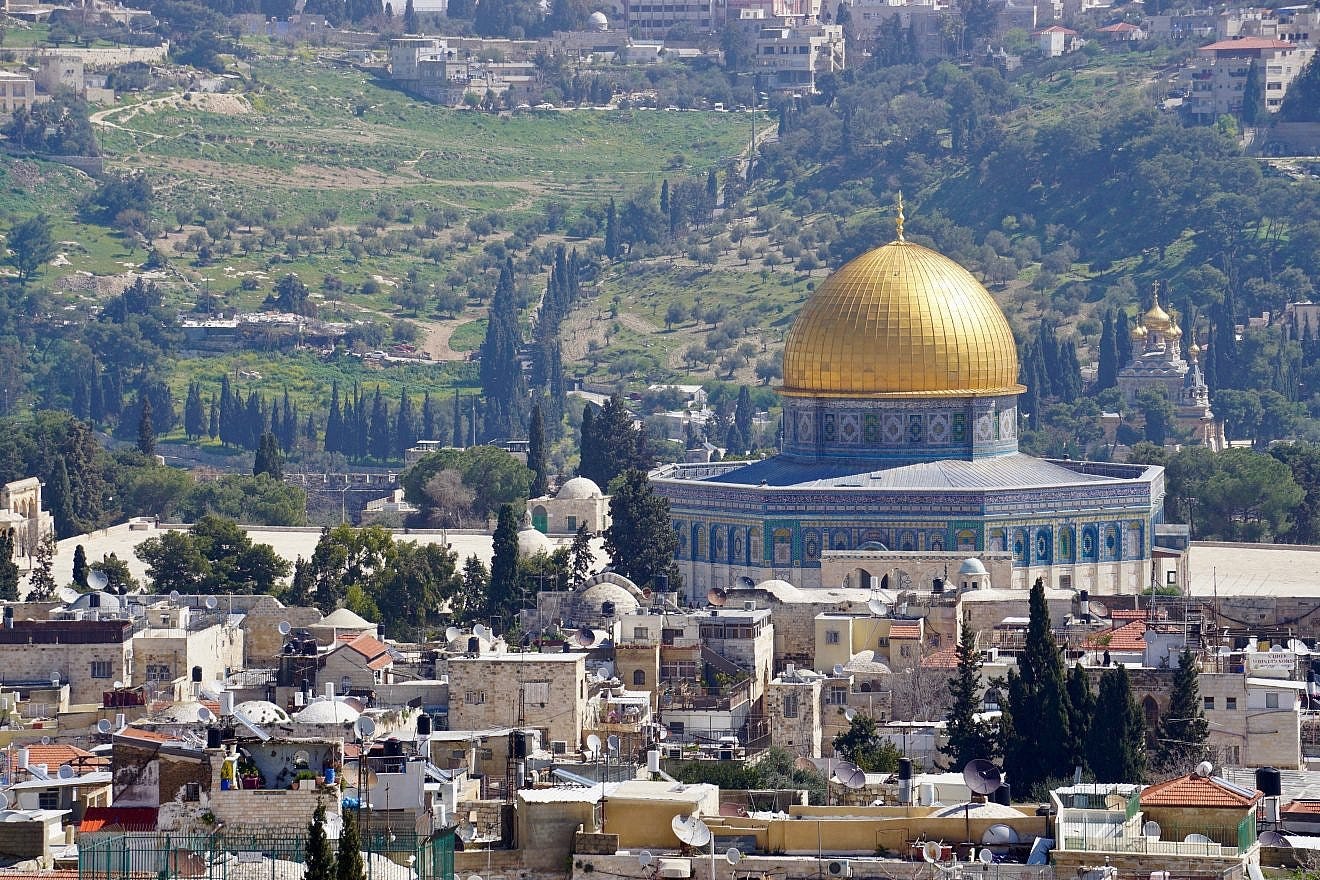Redeeming the Temple Mount
Taking Back What’s Ours
From Hadesh Vol. 1, Issue No. 3
By: Efrayim ben-Yehi’el
If the last ten years has taught modern man a lesson in himself, it’s that man is a religious animal. The void left by militant atheist liberalism seeded a woke (liberalism + progressivism) religious revival analogous to any previous Great Awakening. Man cannot do without religion and its rituals. As Rambam explains in his Guide for the Perplexed, God’s omniscient understanding of human nature is reflected in the underlying logic of the commandments. Through the study of the commandments, we can gain insight into human nature. Conversely, true insights into human nature may be sought in the logic of the commandments.
Anthropologists discovered a profound insight into human nature by means of a universal concept called the sacred space. For reasons unclear to me, humans are compelled to designate certain areas as sacred. For something to be sacred designates the special way people relate to it, but not an inherent quality of the thing itself. Classical Hebrew has a particular term for sacred space (קֹדֶשׁ) derived from the term for sacred (קָדוֺשׁ). These two words are not to be confused. In recognizing the inherent human need for sacred space, God prescribed that we ought to construct a tabernacle (מִשְׁכָּן) and establish it permanently “in the place that I will choose” where it would become a temple (בֵּית הַמִּקְדָּשׁ). There’s that root ק-ד-שׁ ‘sacred’ again.
The relationship between the temple and political autonomy is inseparable. It is quite a brilliant matter that God would choose his place in the political capital of the Israelite Empire of David and Solomon. Transitioning from a nomadic lifestyle to that of a centralized state, it was proper that such a centralized institution such as the temple should be in the political capital of the empire, Jerusalem. Our enemies, Babylonian and Roman, burned our temple to the ground, taking our political autonomy with it.
When the Zionists constructed a state in the Levant of their own design, they intentionally did so without the Temple Mount. In Herzl’s fantasized Jewish state depicted in Altneuland, he constructs a Jewish temple scrubbed of its unique characteristics: located in some other locale, a generic synagogue, no different from anything familiar to Herzl in his fatherland of Austria.
When Herzl’s protégés within the Israeli government conquered the Temple Mount in 1967, there was only one obvious response: return the Temple Mount to its rightful owners, the Muslims. Within the worldview of the Israeli founders, the institution of Temple was an archaic institution of the past. We had nationally progressed beyond the need for sacrifices (falsely imputed to Maimonides’ Guide for the Perplexed), replaced first by synagogue prayer and then by secular nationalism.
The great scandal is not that the Zionist movement would do such a thing. After all, they detailed the action some 65-years prior, and it was entirely coherent within their worldview. No – the scandal was the indifference of the Orthodox. The Orthodox implicitly agreed with returning the Temple Mount to the possession of our enemies, voicing no objection to this historical betrayal. For the Orthodox of the time, the Temple had indeed been replaced by synagogue prayer. What have we need for a barren rock?
Such a dishonest political and religious arrangement was untenable, and a new Nationalist Religious movement was born in part as a reaction to the indifference of the Orthodox of the time. But the human soul and its passions is undeterred from the sophistry of “progress”. A very different cohort of the same generation went and established high places (בָּמוֺת) wherever they could: a wall; a rabbi’s grave in Uman, Ukraine; a rabbi’s grave in Brooklyn, New York; a rabbi’s grave in Meron, Galilee.
Whereas the Torah came to replace ancestor and great-man worship with worship of the One God, Creator of the Universe, in two generations and in the name of progress, the Jewish people had reverted to a religion familiar to the most primitive tribes.
The cure to this disordered state of affairs is the same as it always was. The psychological impulse that currently finds its outlet in new cultic sites around the world finds its proper expression at the Temple in Jerusalem. Absent the Temple, we may sympathize with the folly of our wayward coreligionists.
That said, great “progress” has been made towards remediating this issue.
Before the Temple can be reconstructed, Jewish control of the Temple Mount must be reasserted. The Israeli government vehemently opposes such a fact on the ground because of its fear that the restoration will undermine its political legitimacy. They are probably right about that.
Nevertheless recent years have witnessed Jerusalemite activists–products of that Nationalist Religious movement–slowly and painfully claw back political control of the Temple Mount. They are accomplishing this laudatory effort at risk to their own lives and freedom through a combination of lobbying government officials, ascending the Temple Mount while pushing the status quo, and awareness to Israel’s American political handlers.
Their actions are paying off. As you may well have heard, a record-breaking 55,000 Jews ascended the Temple Mount last year. Today, Jews are once again able to pray in this most sacred space. This is not incidental: it is a product of a concerted, careful, and long-term campaign to return control to Jewish hands. Indeed, it is the very model for what a successful Jewish nationalist effort looks like.
To us, the return to Jerusalem is not merely redemption from the sins of the days of the Great Revolt (c. 70 CE), or the sin of the high places we obliviously and defiantly erect, but redemption from the arrogant replacement theology of the Israeli government.
We may have inherited their political decisions, but it is up to us to redeem ourselves from them.


